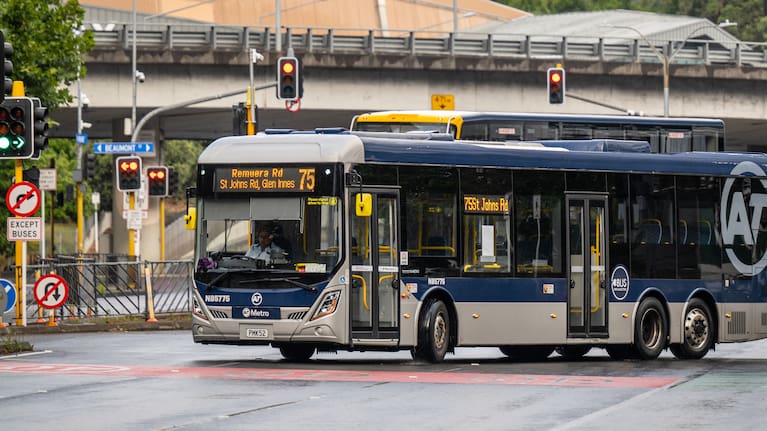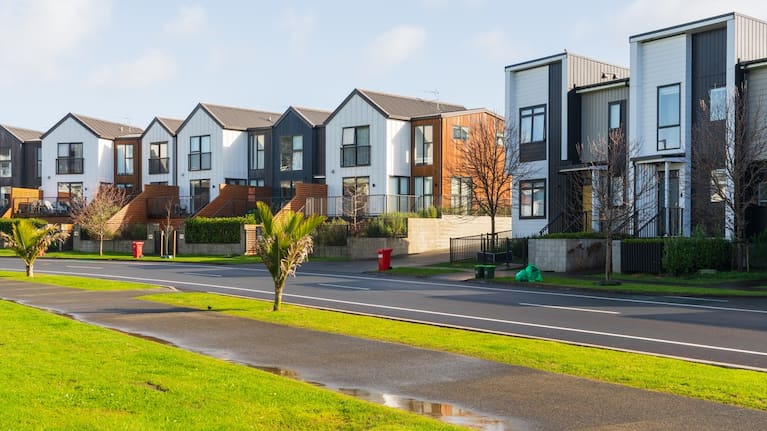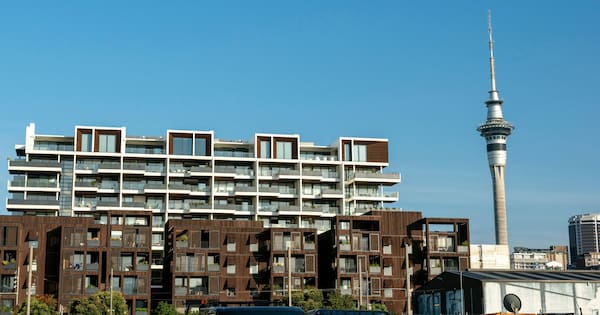Fifteen-storey apartment towers could soon rise around select Auckland train stations in keeping with new zoning plans councillors will consider sending out for public feedback later this week.
The newly-released draft plans will also clamp down on new housing in areas deemed to be flood or otherwise hazard-prone.
Councillors will consider releasing the draft plan and maps for public consultation and submissions at a Thursday meeting. The Government required Auckland’s housing plan change must be notified by October 10.
The council’s policy and planning director, Megan Tyler, described the draft as retaining earlier plans’ focus on housing around transport and town centres but “going further with stronger hazard rules” and better targeting housing in “lower-risk, well-connected areas.”
“The draft plan change delivers in housing capacity requirements by focusing housing opportunities in safe locations in and around our town centres and along our transport networks,” she said in a statement.
“Many Aucklanders have raised concerns about a blanket approach that allows homes in areas without the infrastructure to support them, or where flood risks are high.”
Buildings of 10 to 15 storeys would now be allowed “around train stations across Auckland’s rail network,” according to a council briefing. Mandates under the previous intensification process directed only six storeys.

More apartment development would also now be allowed along 18 frequent bus lines, “enabling 200m on either side of these roads that connect neighbourhoods, main centres, and transport hubs,” and also within 10-minute walking distance of town centres.
Tyler said: “By enabling opportunities for homes near train stations and frequent bus routes, more people can live close to work, cut their commutes and walk to the shops or school. This means more transport choice, less congestion, and better value from the infrastructure Aucklanders have already paid for, including water and stormwater.”
The Government had previously legislated to enable zoning of at least 15 storeys around Maungawhau, Kingsland, Morningside, Mt Albert and Baldwin Ave train stations.
Stronger hazard rules, changes to 2-and 3-storey zones
Tyler added that the draft changes were also a response to the region’s 2023 floods.
“It’s clear that not all land is suitable for new homes, and stronger rules are needed to better protect people and property as climate change increases flood risks,” she said.
“Legislation prevented the council from limiting development in high-risk areas. We’ve been advocating strongly for that to change since 2023 and now, this draft plan change is an opportunity to more thoroughly address the risks of building in hazard areas.”
The council said the draft included stronger rules to limit new homes being built in the most vulnerable areas to flooding and other hazards. More restrictive consenting rules might also apply and “zoning will reduce to single houses” in “the highest-risk areas.”

The number of two-storey zones, known as “mixed housing suburban”, would also increase where there was more limited access to infrastructure and amenities.
The council also wanted “more appropriate controls” for three-storey areas — known as mixed housing urban zones — to provide improved sunlight access, landscaping and privacy, which were not included under the Medium Density Residential Standards.
Council directed to zone for two million more homes
The council’s draft plans were a response to the Government’s moves to allow councils to opt out of the formerly bipartisan medium-density rules, introduced under Labour, which had intended to allow developers to build three-storey townhouses by right.
Housing Minister Chris Bishop allowed Auckland to opt out of the Medium Density Residential Standards, known as MDRS, and the council’s associated “Plan Change 78”.

However, as part of opting out, Auckland Council was still directed to enable at least the same, or greater levels of, housing as under earlier MDRS plans.
This would mean enabling around two million more homes in the city, according to the council, more than doubling the 900,000 homes under the existing zoning.
